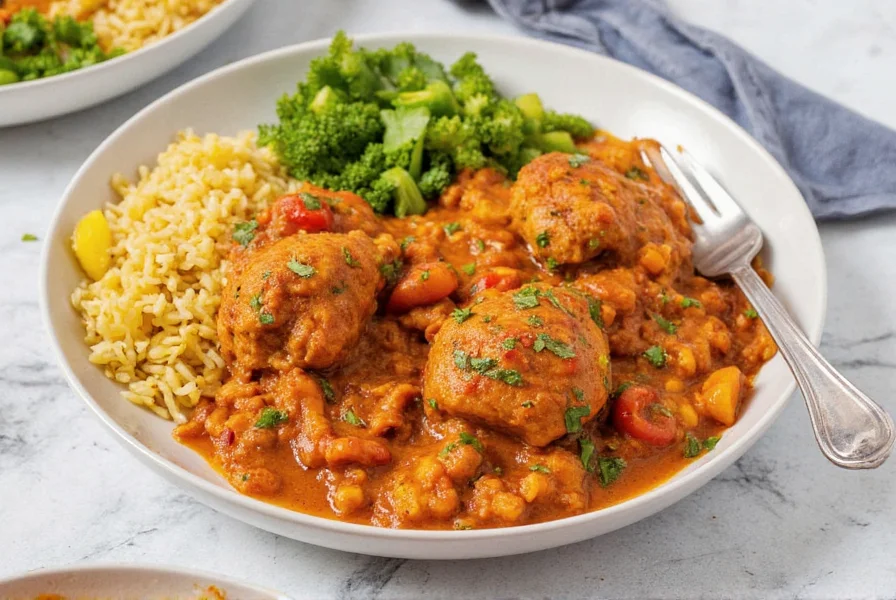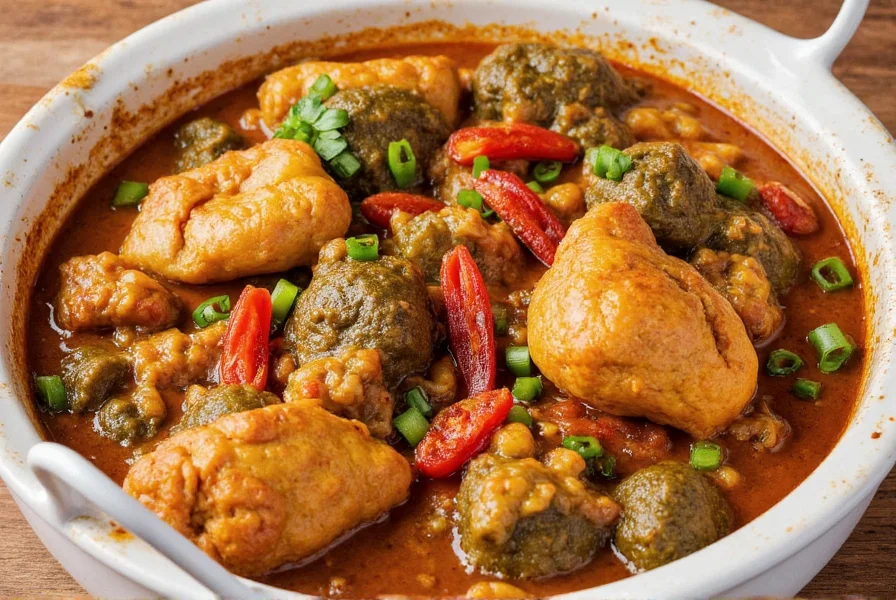Spice Up Your Plate: A Flavorful Journey Through African Food Names and Pictures
Table of Contents
Introduction
If you're a spice enthusiast or a professional in the culinary world, you've probably heard of the rich and vibrant flavors that come from African cuisine. From the smoky depth of berbere to the bright, zesty notes of harissa, African spices are as diverse as the continent itself. But what exactly are these foods called? And how do they look when served on a plate?
In this article, we'll explore the fascinating world of African food names and pictures, delve into the basics of spice, and give you practical tips for incorporating these bold flavors into your cooking. Whether you're an amateur cook looking to expand your palate or a seasoned chef seeking inspiration, this guide has something for you.
Spice Basics: What You Need to Know
Before diving into the world of African food names and pictures, it's important to understand the fundamentals of spice. Spices are more than just flavor enhancers—they’re cultural treasures, often used in rituals, medicine, and daily cooking across Africa.
Some common African spices include:
- Berbere: A fiery spice blend from Ethiopia and Eritrea, known for its heat and complexity.
- Harrisa: A spicy paste made from chili peppers, garlic, and other aromatics, popular in North Africa.
- Mix Spices: A combination of cumin, coriander, cinnamon, and other spices, commonly used in Moroccan and Middle Eastern dishes.
- Cumin: A staple in many African cuisines, adding warmth and earthiness to stews and curries.
These spices not only bring flavor but also tell stories of the people and places where they originate. Now, let’s take a closer look at some of the iconic African foods that make use of these spices—and see what they look like.

African Foods: Names, Flavors, and Pictures
African cuisine is incredibly diverse, with each region offering unique dishes that reflect its culture, geography, and history. Let’s take a tour through some of the most beloved African foods, complete with their names, flavors, and visual appeal.
1. Injera (Ethiopia)
Flavor Profile: Tangy, slightly sour, and soft. Made from teff flour, injera is the staple bread of Ethiopia.
Description: This spongy, fermented flatbread is often used as a base for various stews and vegetables.
Picture:
2. Jollof Rice (West Africa)
Flavor Profile: Rich, tomato-based, and aromatic. Jollof rice is a beloved dish found in Nigeria, Ghana, and Senegal.
Description: This one-pot rice dish is cooked with tomatoes, onions, and a mix of spices, giving it a deep, savory flavor.
Picture:

3. Bobotie (South Africa)
Flavor Profile: Sweet, savory, and mildly spiced. This South African dish combines minced meat with spices, apricots, and raisins.
Description: Traditionally served with yellow rice and a custard topping, bobotie offers a unique blend of flavors.
Picture:
4. Tagine (Morocco)
Flavor Profile: Fragrant, sweet, and savory. Tagine is a slow-cooked stew named after the clay pot it's cooked in.
Description: Often made with lamb, chicken, or vegetables, tagine is seasoned with spices like cinnamon, saffron, and ginger.
Picture:
5. Ugali (East Africa)
Flavor Profile: Neutral, starchy, and filling. Ugali is a staple food in Kenya, Tanzania, and Uganda.
Description: Made from maize meal and water, ugali is served with stews or vegetables.
Picture:
Practical Tips for Cooking with African Spices
Now that you know some of the key African food names and pictures, here are some practical tips to help you incorporate these spices into your cooking:
- Start Small: African spices can be very strong, so start with small amounts and adjust to taste.
- Use Fresh Ingredients: The best flavors come from fresh herbs, ripe tomatoes, and high-quality spices.
- Experiment with Combinations: Try mixing different spices to create your own unique blends. For example, try combining cumin, coriander, and turmeric for a warm, earthy flavor.
- Pair with the Right Dishes: Some spices work better with certain proteins or vegetables. For instance, berbere pairs well with chicken or lentils, while harissa is great with grilled meats or roasted vegetables.
Remember, the key to successful cooking with African spices is to have fun and be adventurous. Don’t be afraid to try new things—your taste buds will thank you!
Buying Guide: Finding the Best African Spices
If you're serious about exploring African food names and pictures, then investing in quality spices is essential. Here's a quick buying guide to help you choose the best products:
1. Berbere Spice Mix
Features: Contains chili powder, coriander, cumin, and other warming spices.
Advantages: Adds depth and heat to stews, soups, and grilled meats.
Use Cases: Ideal for making Ethiopian doro wat or spiced vegetable dishes.
Target Audience: Home cooks and professional chefs who enjoy bold flavors.
Suitable Occasions: Weeknight dinners, holiday meals, or special occasions.
2. Harissa Paste
Features: A thick, spicy paste made from chili peppers, garlic, and olive oil.
Advantages: Adds a smoky, spicy kick to sauces, marinades, and dips.
Use Cases: Perfect for grilling, roasting, or as a condiment.
Target Audience: Anyone looking to add heat to their meals.
Suitable Occasions: Barbecues, lunchtime sandwiches, or as a side condiment.
3. Ras el Hanout
Features: A complex spice blend from Morocco, often containing over 30 ingredients.
Advantages: Offers a deep, layered flavor profile with notes of nutmeg, cinnamon, and cloves.
Use Cases: Great for marinating meats, seasoning stews, or enhancing grain dishes.
Target Audience: Culinary enthusiasts and those interested in Middle Eastern and North African cuisine.
Suitable Occasions: Special dinners, festive gatherings, or as a signature spice in your kitchen.
4. Cumin Seeds
Features: Small, aromatic seeds with a warm, nutty flavor.
Advantages: Adds depth and richness to soups, stews, and baked goods.
Use Cases: Essential for making traditional dishes like jollof rice or Moroccan tagine.
Target Audience: Everyday home cooks and professional chefs alike.
Suitable Occasions: Daily meals, family dinners, or as a pantry staple.
When purchasing these spices, always look for reputable brands that source their ingredients ethically and sustainably. Remember, the right spices can elevate any dish and bring the flavors of Africa into your kitchen.
Conclusion
African food names and pictures offer a window into a world of rich flavors, cultural heritage, and vibrant traditions. Whether you're a seasoned chef or a curious food lover, there's no shortage of exciting spices and dishes to explore.
From the tangy bite of injera to the smoky depth of harissa, each dish tells a story of the people and places that created it. With the right spices and a little bit of creativity, you can bring these flavors into your own kitchen and experience the magic of African cuisine firsthand.
So next time you're shopping for spices, consider adding a few African staples to your collection. Who knows—your next favorite dish might just be waiting for you in a bag of berbere or a jar of ras el hanout.
The journey through African food names and pictures is not just about learning what these dishes are called or how they look—it's about understanding the culture, the history, and the heart behind each flavor.










 浙公网安备
33010002000092号
浙公网安备
33010002000092号 浙B2-20120091-4
浙B2-20120091-4